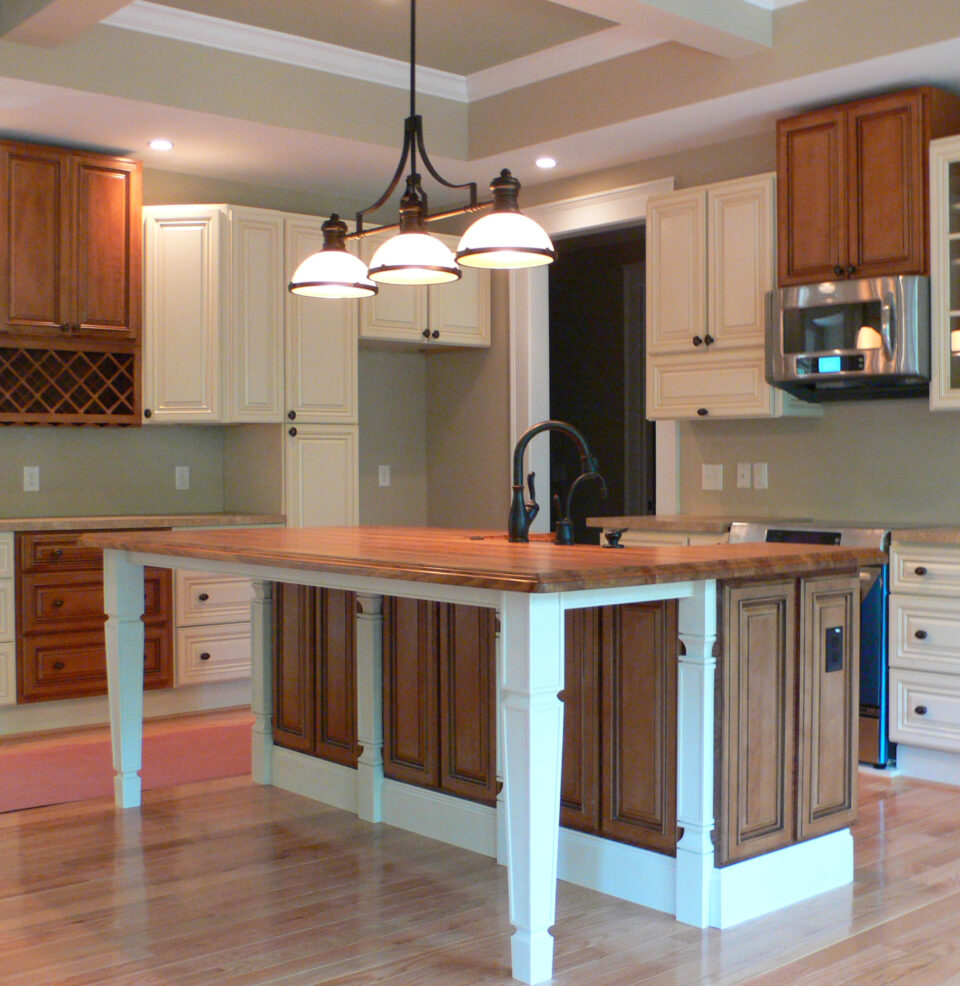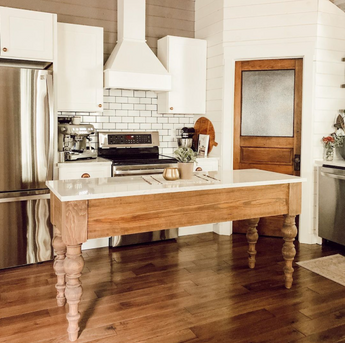Discovering the Crucial Attributes of a Kitchen Area Island Leg for Your Culinary Area
The kitchen island offers as a central center in any cooking space, and the option of leg layout is critical in enhancing both its capability and visual allure. Comprehending the vital features of cooking area island legs-- including product alternatives, style styles, and stability aspects-- can substantially impact the overall experience within the kitchen.
Relevance of Kitchen Island Legs
Cooking area island legs play an important role in both the performance and aesthetics of a kitchen area. They not just support the weight of the island but likewise enhance the overall style, adding to the cooking area's aesthetic allure. The choice of legs can dictate the style of the cooking area, be it modern-day, traditional, or rustic.
Functionally, robust and appropriately made legs ensure stability, enabling the risk-free use of the island for different jobs such as food prep work, eating, or enjoyable. Strong legs protect against tottering and shifting, providing a reputable surface area for everyday activities.
Furthermore, the height and placement of the legs can influence the comfort degree for those seated at the island. A well-considered height can accommodate bar stools or chairs, advertising an inviting setting for celebrations.
Along with these sensible factors to consider, kitchen island legs can function as a centerpiece in the area (kitchen island leg). Attractive or distinctly made legs can boost the layout visual, making the island a focal point. Hence, picking the appropriate cooking area island legs is essential for balancing kind and feature in any kind of cooking area
Material Options for Legs
Selecting the appropriate material for kitchen island legs significantly impacts both resilience and design. Usual product choices include rock, wood, and metal, each offering unique advantages.
Timber is a prominent choice as a result of its heat and flexibility. It can be easily tailored to match various style styles, from rustic to contemporary. Woods like oak and maple offer superb stamina and longevity, while softer timbers can be more at risk to damage.
Metal legs are preferred for their smooth, contemporary aesthetic. kitchen island leg. Stainless-steel and aluminum are not just durable but additionally resistant to corrosion and rust, making them optimal for kitchen settings. They can produce a commercial appearance and are commonly available in different finishes to match other kitchen aspects
Rock legs, such as granite or marble, add a component of high-end and security. While heavier than various other materials, they supply outstanding resilience and can stand up to significant weight. They might require extra support to make certain proper balance.
Inevitably, the option of material ought to align with both useful demands and the general design vision of the cooking area area, guaranteeing that the island legs enhance both energy and appearances.
Style Styles to Take Into Consideration
What layout styles should be considered when picking legs for a kitchen area island? The option of leg design dramatically affects the overall visual of your cooking room. For a contemporary kitchen area, smooth and minimalistic leg layouts, such as stainless-steel or geometric shapes, can boost the contemporary allure, giving a clean and clean appearance.
On the other hand, typical kitchen areas Going Here gain from traditional designs such as transformed or carved wooden legs, which include warmth and personality. These options frequently include elaborate information that complement vintage home furnishings. For a rustic atmosphere, think about legs made from reclaimed wood or functioned iron, which bring a natural, earthy high quality to the room.
If you lean towards an industrial style, robust metal legs with a troubled surface may be suitable, providing an edgy yet advanced touch. Additionally, farmhouse design kitchen areas can include chunky legs that evoke a sense of durability and homeliness.

Height and Stability Variables
The height and stability of a kitchen area island are critical components that straight affect its functionality and customer experience. An excellent kitchen area island leg should provide adequate height to fit a selection of jobs, from food prep work to casual dining.
Stability is equally vital, especially as kitchen area islands usually serve as focal factors in cooking environments. A steady leg style reduces tottering and shifting, which can bring about mishaps or pain throughout usage. Materials such as solid wood, metal, or a combination thereof are frequently employed to attain the needed durability. The leg's accessory to the island's base need to be safe and secure, ensuring longevity and durability against the wear and tear of day-to-day usage.
Personalization and Devices
Personalization choices and accessories for kitchen island legs can dramatically enhance both the aesthetic charm and functionality of the area. Home owners can select from a range of products, consisting of metal, timber, and rock, allowing for seamless assimilation with existing kitchen decor. The choice useful source of coating-- be it an all-natural stain, paint, or powder finish-- more individualizes the look, guaranteeing that the island matches the total layout theme.
Along with product and finish, homeowners might likewise explore the unification of accessories such as his explanation attractive braces, adjustable feet, or integrated shelving. Brackets can use additional support while adding to a rustic or modern visual. Flexible feet are particularly beneficial for uneven flooring, making sure the island remains steady and degree, which is critical for both safety and security and usability.

Conclusion
In final thought, cooking area island legs serve an essential duty in providing security and enhancing the overall visual of the culinary space. Customization alternatives and devices can boost the cooking area island, making it a distinct focal factor within the home.
The kitchen island offers as a central hub in any culinary room, and the selection of leg layout is crucial in boosting both its capability and aesthetic charm. Comprehending the essential attributes of kitchen area island legs-- consisting of product alternatives, style styles, and stability aspects-- can substantially affect the overall experience within the kitchen area.Kitchen island legs play a crucial function in both the functionality and looks of a kitchen room.What layout styles should be considered when picking legs for a kitchen area island?In conclusion, cooking area island legs offer a crucial duty in giving security and improving the general visual of the cooking area.